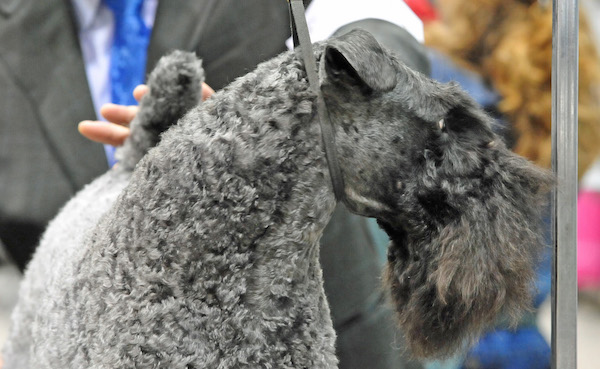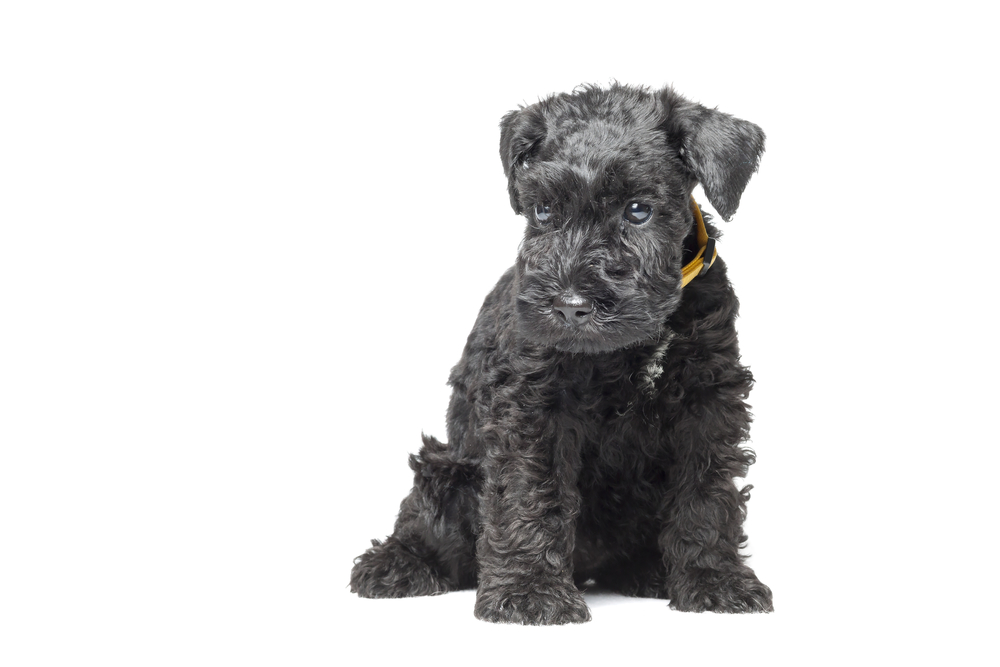
Kerry Blue Terriers are born black, and if correct, they’ll develop the gray color with age due to the action of the dominant G allele. In the Kerry Blue, the color starts to fade with maturity and becomes its famous solid slay gray color by the time they’re about a year and a half old.
Color abnormalities in the breed are exceedingly rare, but it has happened that a Kerry Blue was born a wheaten-color, or sometimes black & tan. For our genetically geeky readers, a low percentage of Kerries still carry the a/y allele. When two A a/y Kerries are bred, a wheaten colored Kerry results. As far as we can tell with our own limited knowledge, no solid black Wheatens are ever born from wheaten (a/y a/y) colored parents. Wheaten Kerries are said to have poor pigmentation on their eye rims and nose, to the extent that “winter nose” is evident.
Getting back to that “graying” gene, it occurs in a few other breeds besides the Kerry Blue, namely Poodles, the Bearded Collie, Tibetan Terrier, Polish Lowland Sheepdog, Old English Sheepdog, the Irish Deerhound and Cesky Terrier, Bedlington Terriers, Dandie Dinmont Terrier, Havanese, Glen of Imaal Terrier, both the PBGV and GBGV, and Irish Wolfhound. Notice anything about these breeds? They’re all long-haired. Some speculate that this is because hair never gets long enough on short-haired breeds that may well have the greying gene, but their hair is shed before it ever starts the greying. It’s also been noted greying seem more prevalent in non-shedding breeds, probably because hair that isn’t shed has longer to turn grey.
Image by State Farm – Flickr: Kerry Blue Terrier, CC BY 2.0, https://commons.wikimedia.org/w/index.php?curid=31502574

